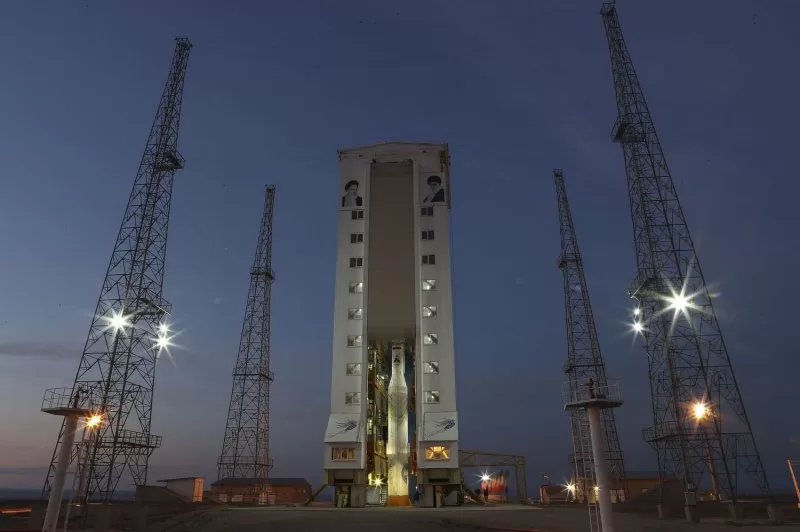An Iranian home-made Simorgh rocket, shown here in 2021, was used to launch three satellites into low Earth obit, Iranian officials announced Sunday. Western officials say the launch bolsters Iran’s ballistic missile efforts. EPA-EFE
Jan. 28 (UPI) — Iran has launched three satellites into space with a rocket that had failed multiple times before, Iranian officials announced Sunday. Western authorities have said the move improves Tehran’s ballistic missile capabilities.
Iran has claimed the launch is part its peaceful civilian space program, but U.S. officials said in a 2023 worldwide threat assessment said launches like this one and development of related satellites “shortens the timeline” for Iran to develop an intercontinental ballistic missile because it uses similar technology.
That report specifically cites the type of rocket used to launch the satellites, the Simorgh, as a possible dual-use rocket.
The Simorgh, or “Phoenix,” which is a satellite-carrying rocket, has been part of a series of setbacks in recent years for Iran’s civilian space program, including fatal fires and a launchpad rocket explosion.
France, Germany and the United Kingdom condemned a Jan. 20 Iranian satellite launch with a Simorgh saying it, too, was capable of helping Iran develop long-range ballistic missiles.
“We have longstanding concerns over Iran’s activity related to ballistic missile technologies that are capable of delivering nuclear weapons,” the countries said. “These concerns are reinforced by Iran’s continued nuclear escalation beyond all credible civilian justification.”
Iranian State TV named the most recently launched satellites Mahda, Kayhan-2 and Hatef-1. The Mahda is a research satellite, the Kayhan and the Hatef are nanosatellites focused on global positioning and communication, the report said. Each satellite is likely to be put into low Earth orbit.
Iran’s Information and Communications Technology Ministry has said the Mahda had already sent signals back to Earth.
The launch comes against the backdrop of continued tensions in the Middle East as the war between Israel and Hamas has dragged on into its third month, and taken the lives of tens of thousands of people since Hamas launched a surprise attack on Israel Oct. 7, 2023.
There are continued fears of the war broadening into a regional conflict and Iran’s backing of Houthi rebels is already of concern. Iran’s rocket program adds to the discontent. The Houthi militants have made repeated attacks on ships in the Red Sea, part of a targeted effort to disrupt the regional commercial shipping industry in the region.
Iran itself has not intervened directly in the conflict, but backs the Houthi rebels that are in constant motion in the region and have carried out dozens of attacks on American backed forces, its military bases and allies since November.
A drone attack Sunday killed three U.S. soldiers and wounded 25 others. The trio were the first American casualties killed by firepower in the war between Israel and Hamas. Iranian-backed Iraqi militias claimed responsibilities for the attack on the U.S. military base along the Jordanian border with Syria.
Three Navy SEALs have been declared dead after going missing more than 10 days ago, the first overall American casualties of the Israel-Hamas war.
Associated Press footage of the Simorgh launch showed it took place at the Imam Khomeini Spaceport in Iran’s rural Semnan province.
“The roar of the Simorgh (rocket) resonated in our country’s sky and infinite space,” said Abbas Rasooli, a state TV reporter, in the footage.
The footage showed the rocket was emblazoned with the phrase “We Can” in Farsi, which was a nod to the rocket’s success in light of the previous failed attempts.

